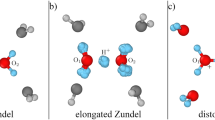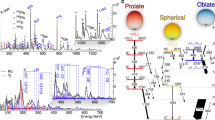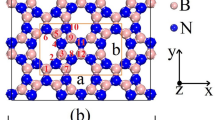Abstract
ONE of us recently published a table of constants for the neutral hydrogen molecule (Proc. Nat. Acad. Sci., 14, 12; 1928). The most uncertain quantity in that table was the value of the moment of inertia for the ‘B’ level. The value given (1.99 × 10-40) is based on Hori's very doubtful interpretation of Witmer's band progression B3-An. We have now photographed the entire B-A system in the second order of a ten-foot vacuum spectrograph, designed by Prof. J. J. Hopfield and constructed in the shop of this laboratory. The new plates show clearly that the bands of the B-A system, originally analysed by Dieke and Hopfield, consist of R and P branches only, in contrast to Hori's assumption of an R branch plus coincident P and Q branches. On this new interpretation a complete verification of the combination principle has been obtained. The lines show clearly the alternating intensity to be expected for a symmetrical molecule.
This is a preview of subscription content, access via your institution
Access options
Subscribe to this journal
Receive 51 print issues and online access
$199.00 per year
only $3.90 per issue
Buy this article
- Purchase on SpringerLink
- Instant access to full article PDF
Prices may be subject to local taxes which are calculated during checkout
Similar content being viewed by others
Author information
Authors and Affiliations
Rights and permissions
About this article
Cite this article
HYMAN, H., BIRGE, R. Molecular Constants of Hydrogen. Nature 123, 277–278 (1929). https://doi.org/10.1038/123277b0
Issue date:
DOI: https://doi.org/10.1038/123277b0



